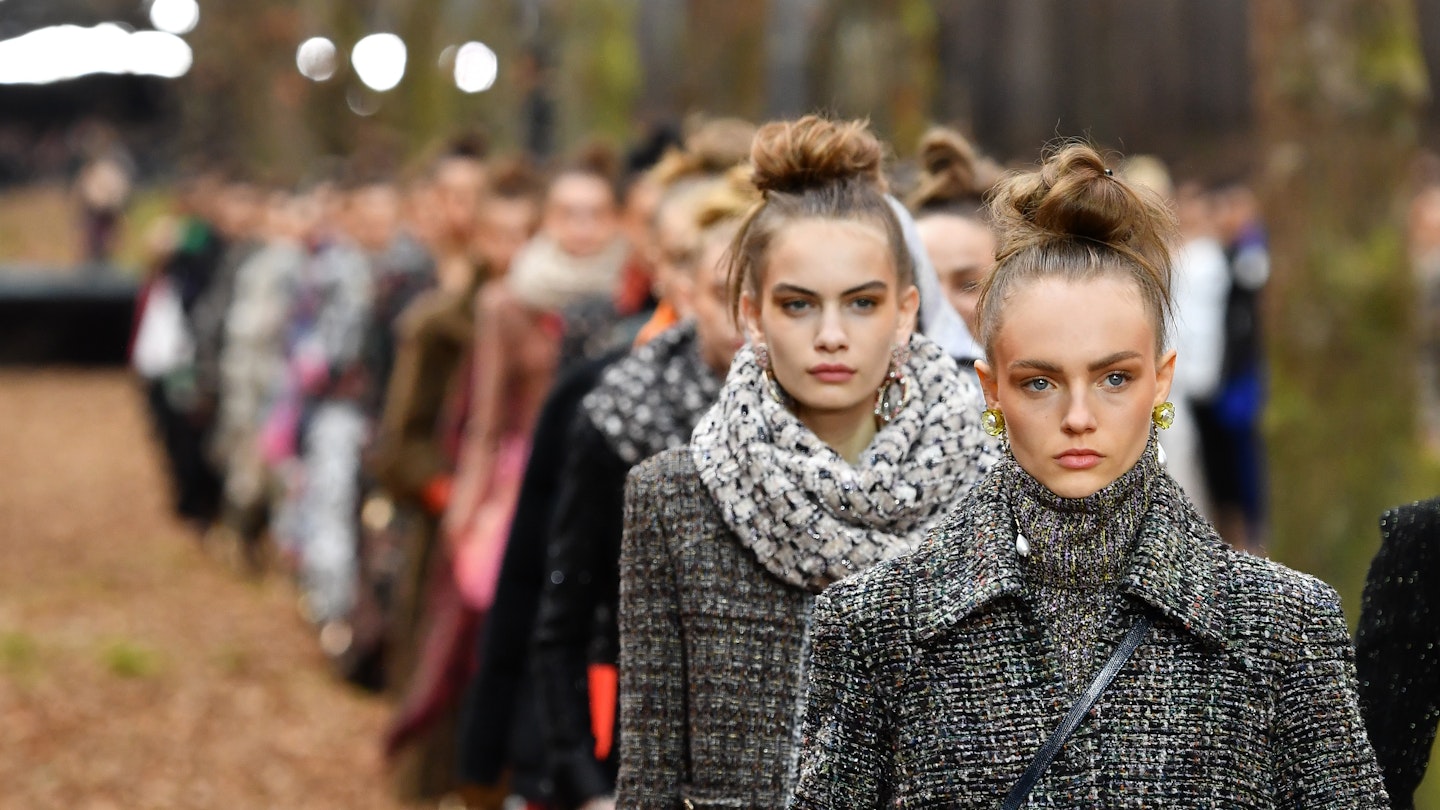This morning, Chanel showed it’s autumn winter 18 collection at Paris Fashion Week. It was business as usual for Karl Lagerfeld who took over the Grand Palais to create a leaf-strewn wonderland where models presented tweed, tailoring and party dresses. Among the fanciful frocks and tapestry of outerwear, Kaiser Karl bought one of this coming fall’s most unlikely trends to fever pitch: the balaclava.

It started at Calvin Klein when Raf Simons introduced a dystopian flavour to his vision of Middle America. It was picked up at Gucci with Alessandro Michele tapping into international cultures and philosophical concepts. And, it was presented at Preen where eco-feminists were on the agenda and IT girls were ready to go hiking. Other brands, like Matty Bovan, Richard Malone, Alexander Wang and Versace also touched based on this unexpected accessory.
The balaclava dates back to in 1854, while the British were battling the Russian army during the Crimea war near their supply base, Balaclava, Ukraine. The weather was bitterly cold and this face-covering, which was knitted by British women, was essential for the underprepared troops. It’s interesting in light of the current conflict in Crimea that this symbol of a fight between the West and Russian would be topical again.
This is by no means the only time this woollen accessory has got twinned with politics. It was a lynchpin of the uniform of the OMON, a special Russian police task force who used it to shield their identity and create an atmosphere of intimidation. In 2012 it was re-appropriated by the Russian protest group, Pussy Riot who rose to fame by storming a Russian Orthodox Church wearing absurdly bright balaclavas. Coincidently, in the same year, director Harmony Korine suited up his wild child subjects in pink ski masks, which evoked Pussy Riot’s iconic headwear, for his subversive crime caper Spring Breakers.

These days, guerrilla warfare no longer needs weapons, but words - with the recurrence of protest in the streets and the all-pervasive influence of social media. This headwear is anti-fashion, anti the large and untenable hair and beauty industry. It’s a conceptual message of resistance, which feels palpable at fashion week where the ateliers, editors, buyers and influencers tend to be progressive in perspective and politics. Here, the balaclava has found a new and fascinating audience.
There are murmurs that Western fashion brands have saturated the Asian market their profit-driving interests have moved to the Middle East where there is a substantial wealthy audience that’s still largely under-catered for. By including modest headwater, like a balaclava or a head shawl, into their fashion shows, labels like Chanel or Versace, can tap into a customer base that doesn’t necessarily see themselves readily reflected on the runway.
Fashion is rarely known to be practical, and even rarer is it really political. On the whole, it fetishizes the uncomfortable - stilettos are the perfect example - but this season, it’s turned a style corner. Cagoules and tweed, balaclavas and sneakers are the order of the day. ‘Adornment is a communicative symbol that serves crucial functions within human lives’, wrote Mary Ellen Roach and Joanne Bulboz Eicher in The Language of Personal Adornment. Whether the balaclava has entered AW18’s sartorial vocabulary because it’s a dystopian symbol, because it hints at wider socio-economic change or because it’s a gimmicky stunt who knows, but we’re just looking forward to having warm noses this autumn.
This article originally appeared on The Debrief.
